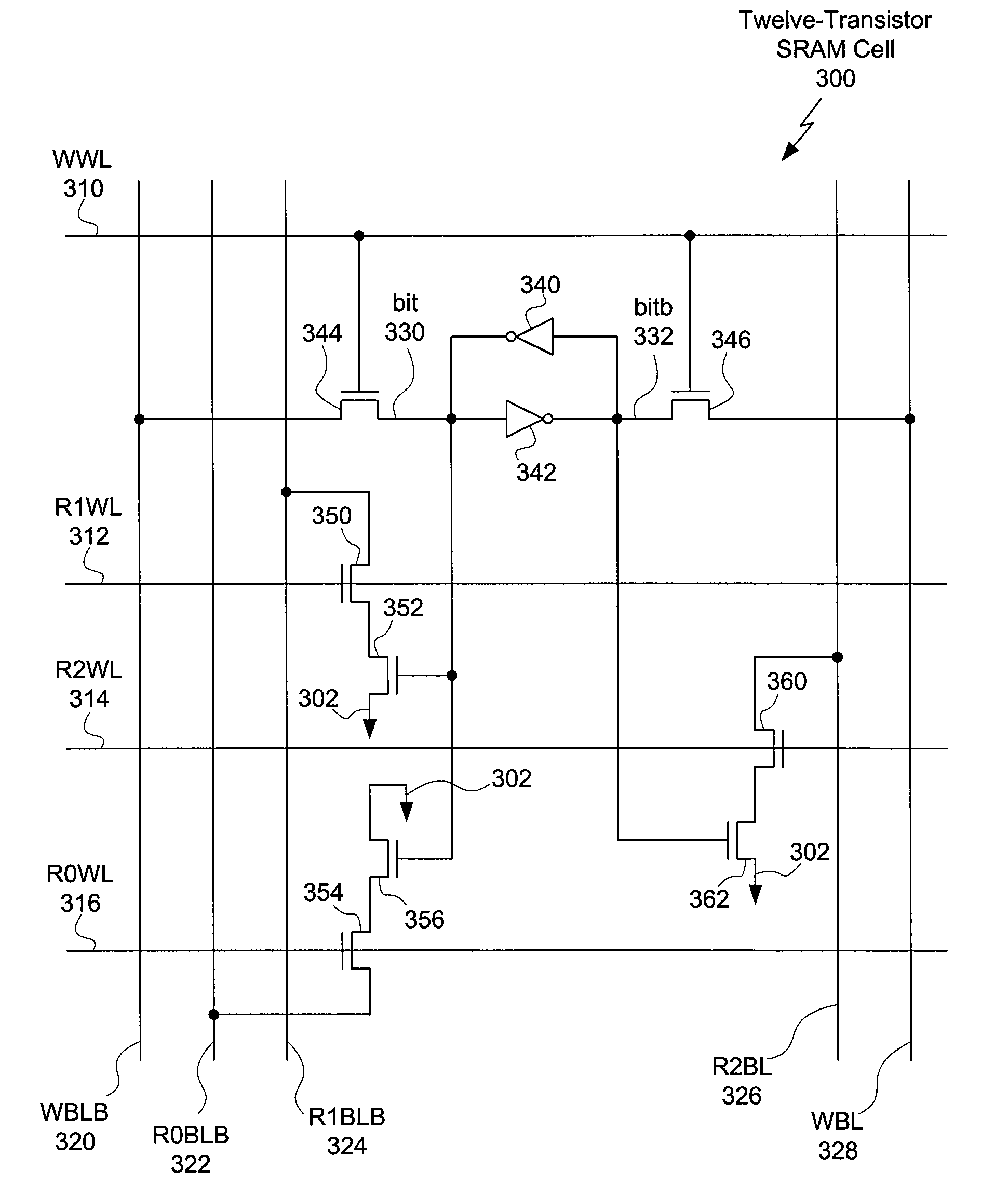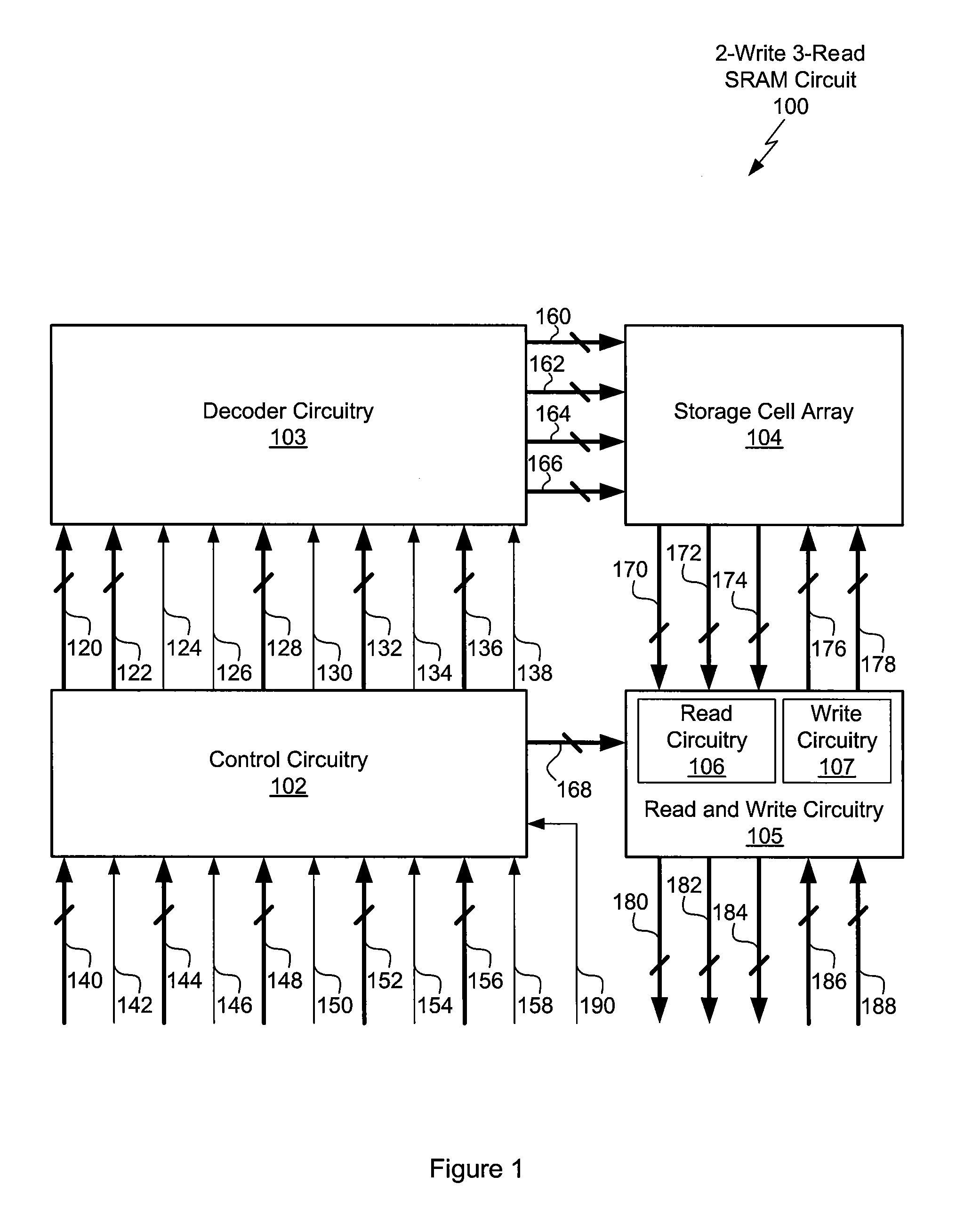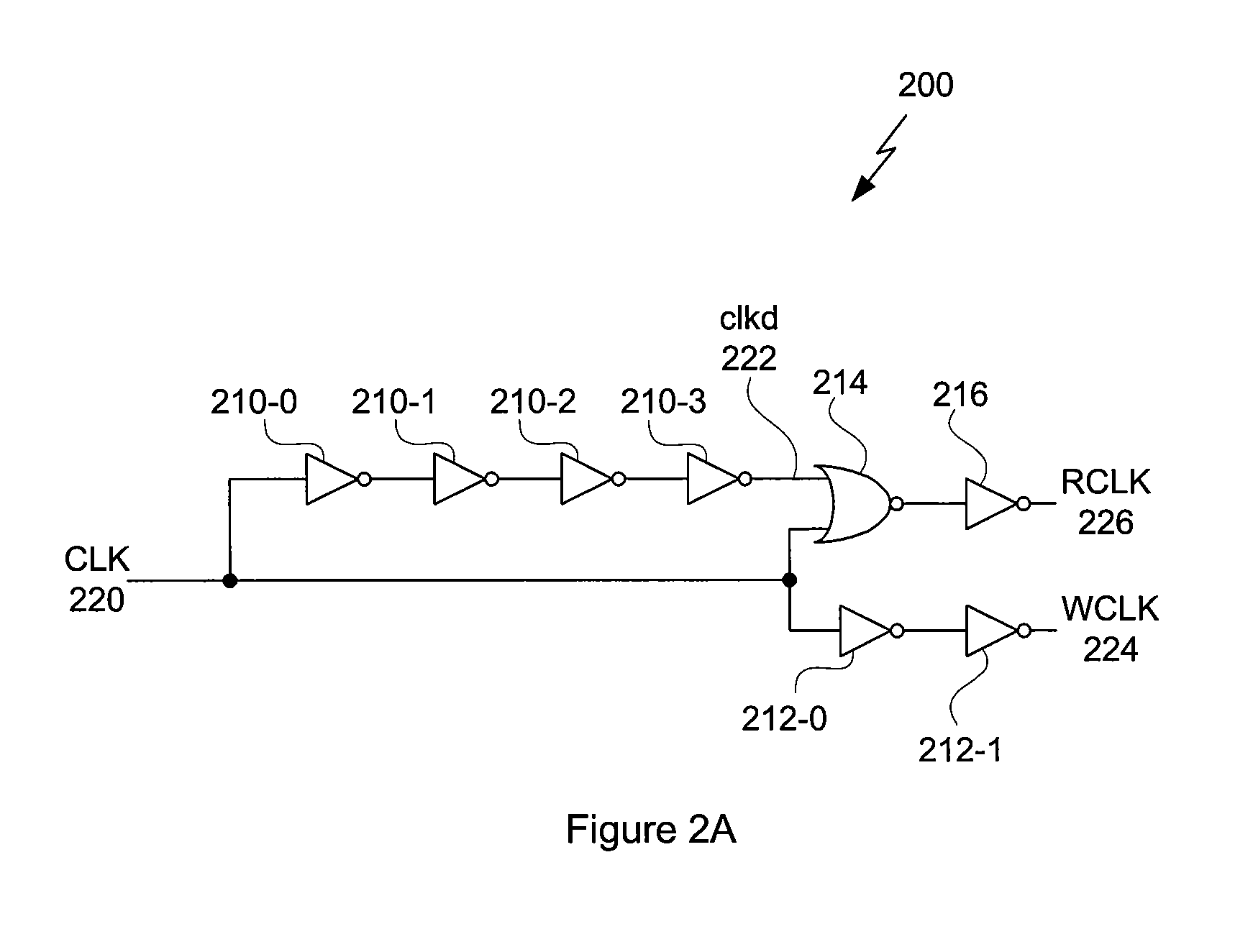2-write 3-read SRAM design using a 12-T storage cell
- Summary
- Abstract
- Description
- Claims
- Application Information
AI Technical Summary
Benefits of technology
Problems solved by technology
Method used
Image
Examples
Embodiment Construction
[0026]FIG. 1 illustrates the architecture of a two write (2-write), three read (3-read) static random access (SRAM) memory circuit 100, according to one embodiment of the invention. The 2-write 3-read SRAM circuit 100 includes control circuitry 102, decoder circuitry 103, a storage cell array 104, and read and write circuitry 105.
[0027]The control circuitry 102 includes two input write addresses, write address zero (W0A) 140 and write address one (W1A) 144, with corresponding write enables write enable zero (W0E) 142 and write enable one (W1E) 146. The control circuitry 102 also includes three input read addresses, read address zero (R0A) 148, read address one (R1A) 152 and read address two (R2A) 156, with corresponding read enables read enable zero (R0E) 150, read enable one (R1E) 154, and read enable two (R2E) 158. A clock input (CLK) 190 controls the timing of read and write operations within the SRAM circuit 100. When W0E 142 is active, then W0A 140 serves as the address for a w...
PUM
 Login to View More
Login to View More Abstract
Description
Claims
Application Information
 Login to View More
Login to View More - R&D
- Intellectual Property
- Life Sciences
- Materials
- Tech Scout
- Unparalleled Data Quality
- Higher Quality Content
- 60% Fewer Hallucinations
Browse by: Latest US Patents, China's latest patents, Technical Efficacy Thesaurus, Application Domain, Technology Topic, Popular Technical Reports.
© 2025 PatSnap. All rights reserved.Legal|Privacy policy|Modern Slavery Act Transparency Statement|Sitemap|About US| Contact US: help@patsnap.com



